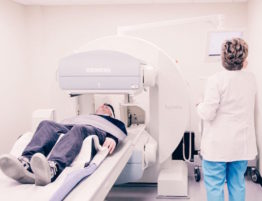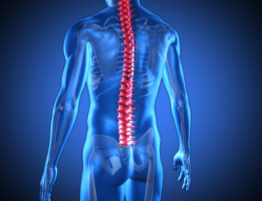The severity of injuries suffered in a serious aviation accident depends on many factors. Most people assume there isn’t very much an individual can do to protect themselves. However, there are some general safety tips to follow when you travel by air.
Before the Flight
- Listen to the pre-flight safety briefing.
- Read the safety data card in the seat pocket in front of you.
- When in your seat, keep your seat belt on.
- Identify the closest emergency exit in front and behind you, and then count the seat rows to reach those emergency exits. This will be very helpful in case of evacuation in a smoke filled airplane.
What to Wear to Reduce your Risks
In the unlikely event of an airplane evacuation via escape slides, synthetic fibers can become very hot due to friction, and melt causing first, second and even third degree burns to the body and legs. The following steps should be taken when traveling to ensure passenger comfort and safety.
- Wear clothes made of natural fibers such as cotton, wool, denim, and leather. These fibers offer the best protection during an airplane evacuation or fire. Synthetics such as rayon, polyester, and nylon (especially in hosiery) can melt when heated.
- Wear clothing that is roomy and comfortable.
- Wear long pants and long sleeves. Avoid wearing shorts or skirts since these types of clothes do not appropriately cover extremities.
- Wear low-healed laced or strapped shoes, boots, or tennis shoes. Shoes made of leather or canvas are preferable. High heeled shoes will have to be removed before leaving the airplane via an escape slide. This will slow your departure from the airplane and put you at risk for severe injury from possible hazards such as broken glass, or metal debris. Avoid wearing sandals for the same reasons.
Turbulence
Turbulence happens and much of it is unpredicted. And when it does happen, adults and children who are not buckled up can be seriously injured. According to the FAA, the majority of turbulence-related injuries and deaths occur when the seat belt sign is on. The following advice should keep you from becoming one of those statistics.
- Wear your seat belt at all times, turbulence is not always predictable.
- In non-fatal accidents, in-flight turbulence is the leading cause of injuries to airline passengers and flight attendants.
- Each year, approximately 58 airline passengers in the United States are injured by turbulence while not wearing their seat belts.
- From 1981 through December 1997, there were 342 reports of turbulence affecting major air carriers. As a result, three passengers died, 80 suffered serious injuries and 769 received minor injuries.
- At least two of the three fatalities involved passengers who were not wearing their seat belts while the seat belt sign was illuminated.
- Of the 80 passengers who were seriously injured, approximately 73 were not wearing their seat belts while the seat belt sign was illuminated.
- Generally, two-thirds of turbulence-related accidents occur at or above 30,000 feet. In 1997, about half of the accidents occurred above 30,000 feet.
Emergency Evacuation
The best preparation for an emergency evacuation is to be familiar with the location of the exits, be ready to follow the commands of the flight and cabin crew, and to wear clothes that facilitate moving down an emergency slide. For example, high heeled shoes may cause the slide to rip. In the case of deployment of emergency oxygen, your first priority is to put on your own mask. If the cabin is depressurized, you face the risk of loss of consciousness. Putting on your mask first decreases the risk of your passing out before having the opportunity to help your children or other passengers with their oxygen masks.
In the unlikely event that you are involved in an emergency situation the most important thing you can do is to remain calm and follow the directions of the flight attendants and flight crew.
Airplane Accidents and Injuries – An Overview
According to the Federal Aviation Administration (FAA) air travel is expected to double over the next 20 years. As air traffic increases so does the rest of aviation accidents. Generally, air traffic is considered to be a safe means of transportation, but when accidents do occur they often result in absolute fatalities. Smaller, less serious accidents involving private aircraft are more frequent than people realize because most of these airline incidents are unreported.
Potential liability (legally responsible) parties of vary depending on the cause of the accident. The owner and operator of the aircraft’s certainly may be liable; manufacturers or main and suppliers may also be liable in certain circumstances; even the Federal gov’t may bear some responsibility in an aircraft accident.
Strict Liability in Aviation Accidents
While pilot error usually plays a part in aircraft accidents, problems with the aircraft or its component parts may also contribute to the accident or even the severity of injury suffered. In those cases, the manufacturer of the aircraft, or the manufacturer of a component part, may share the legal blame with pilots for the crashes or for the injuries the accident caused under the legal theory of strict liability.
Criminal Liability in Aviation Accidents
In addition to a civil claim against individuals or entities for causing an aviation accident, the government may also pursue criminal sanctions. Both the Federal government and individual states can impose criminal sanctions in cases involving aviation. Although the classifications and details may vary between them, most states impose criminal sanctions on aviators for reckless conduct that leads to injury, death, or property damage.
Call Our Aviation Accident Attorneys for a Free Consultation
If you were injured in a plane crash, or a loved one was killed in an aviation accident, you need a law firm that has experience in litigation aviation accident claims. From Long Beach, CA law offices, our experienced aviation injury and wrongful death trial lawyers can help you get the compensation you deserve. Contact our lawyers today for a free, no obligation legal consultation.
- Who can be held responsible to the injured parties in an air crash?
- Can the owner/operator be held criminally liable?
- What is the Statute of Repose?
- What is the FAA?
- What is the NTSB?
- What is GARA?
- What are the most common causes of aircraft accidents?
- Do the same laws apply to commercial aircraft and private aircraft?





